Abstract
From studies of the oxygenation rate of red blood cells (RBC) using rapid-mix techniques, it has been suggested that RBC are surrounded by a stagnant layer of water that does not (or cannot) mix with the rest of the water. A consideration of the appropriate hydrodynamics and convective diffusion rates shows that a mixer can reduce the resolution time to approximately 1 ms (or possibly less) and give a diffusion layer around the TBC that is approximately 1 micron thick. In stopped flow equipment it expands to approximately 4 micron over approximately 10 ms, whereas in continuous flow work the diffusion layers expands slightly less rapidly and less far. Thus the rate of oxygenation of TBC should be slower when measured by stopped flow techniques than by continuous flow apparatus for which the rate will depend weakly on the Reynolds number of the flow in the interrogation tube.
Full text
PDF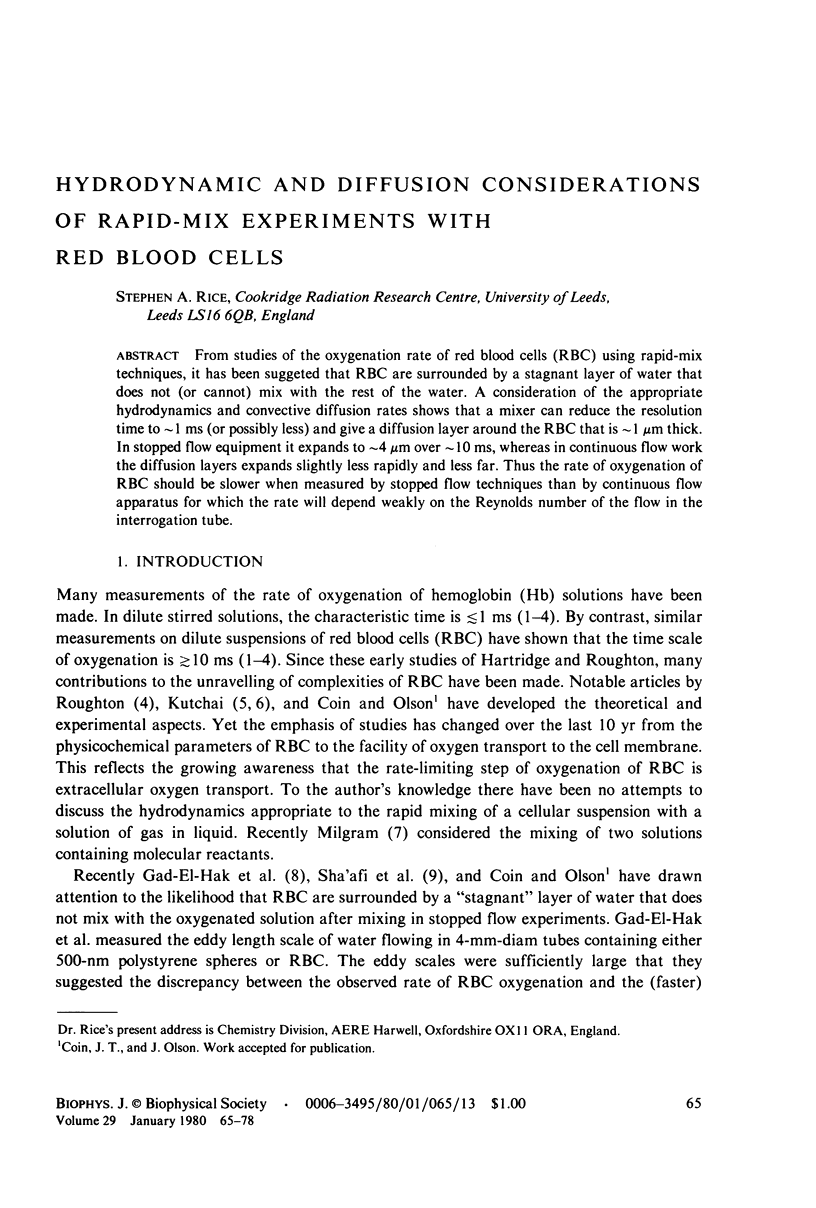
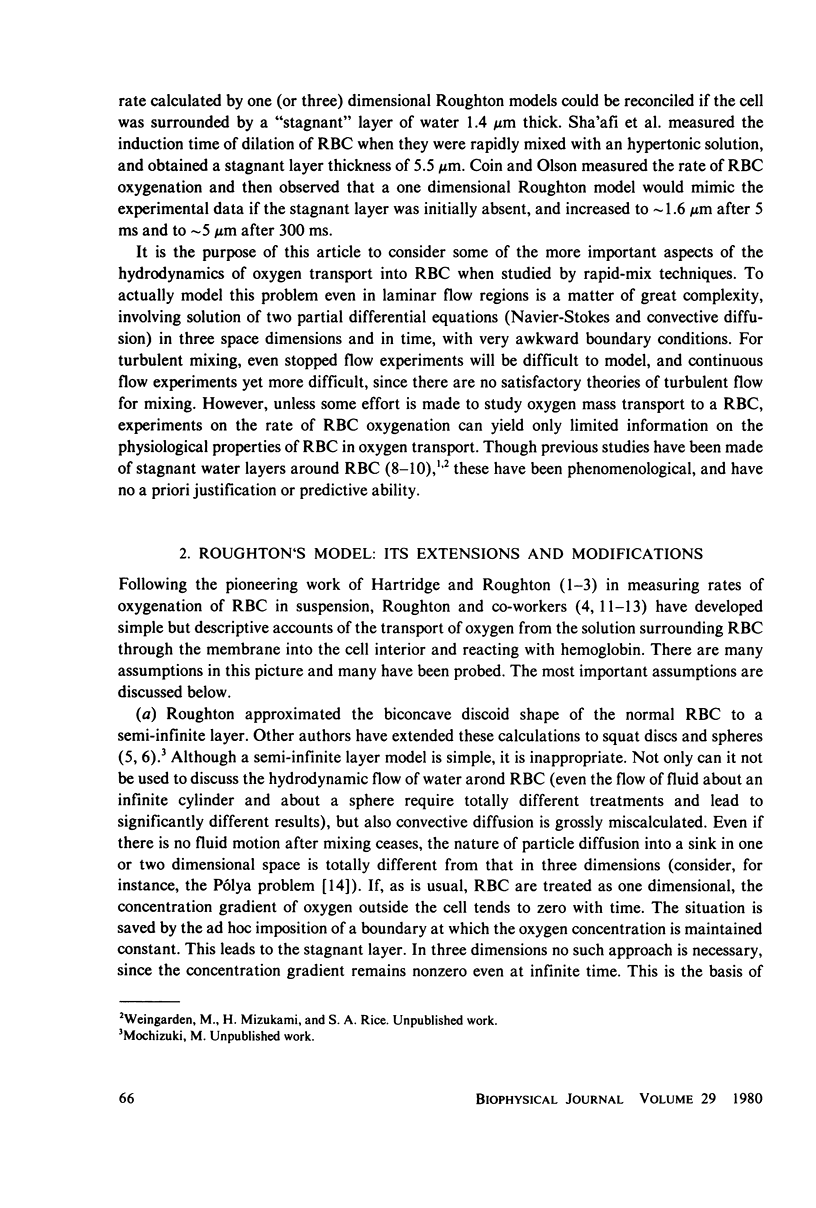
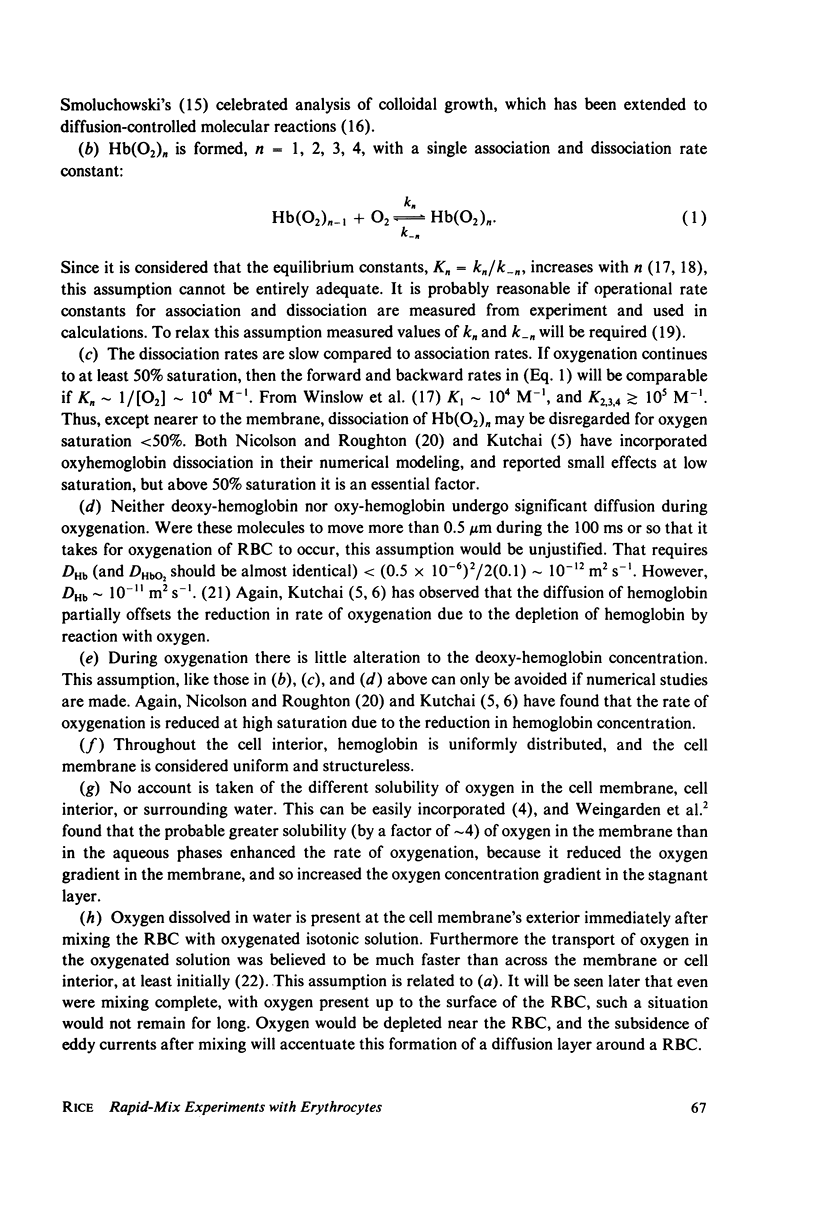
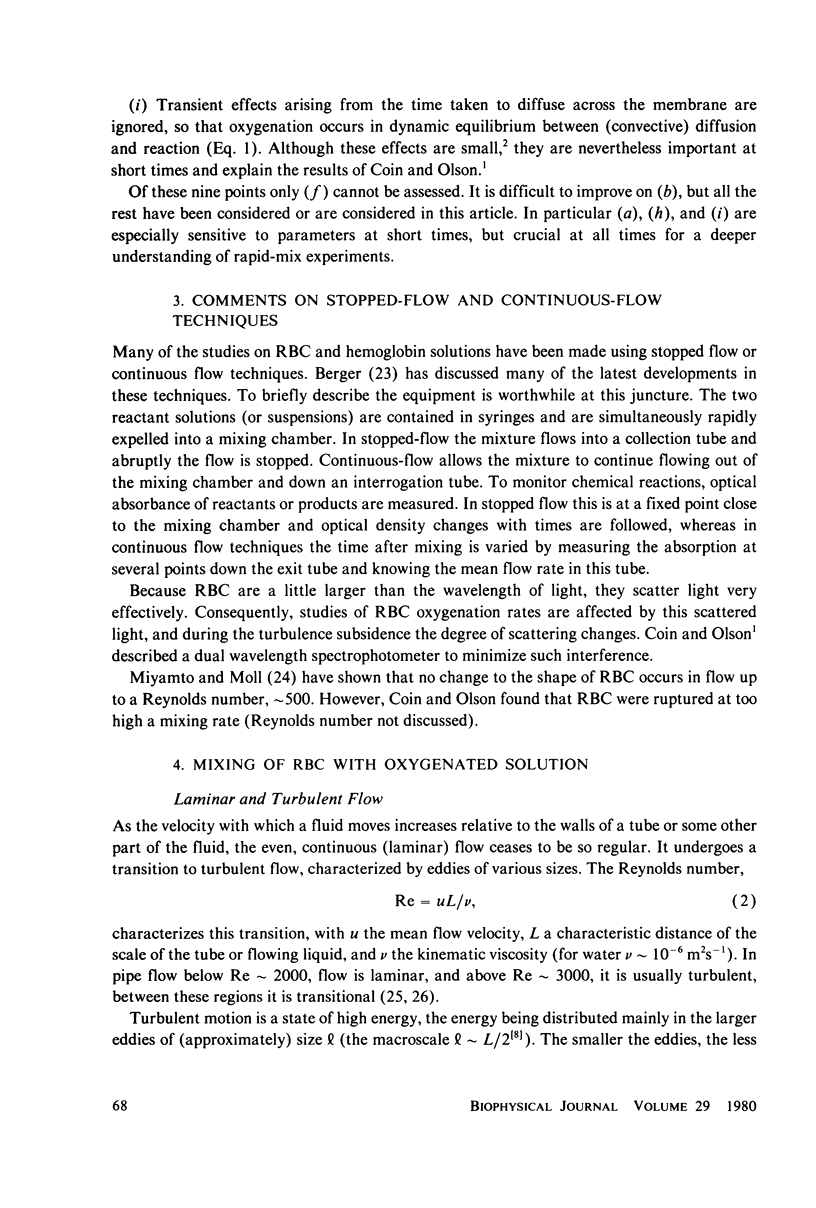
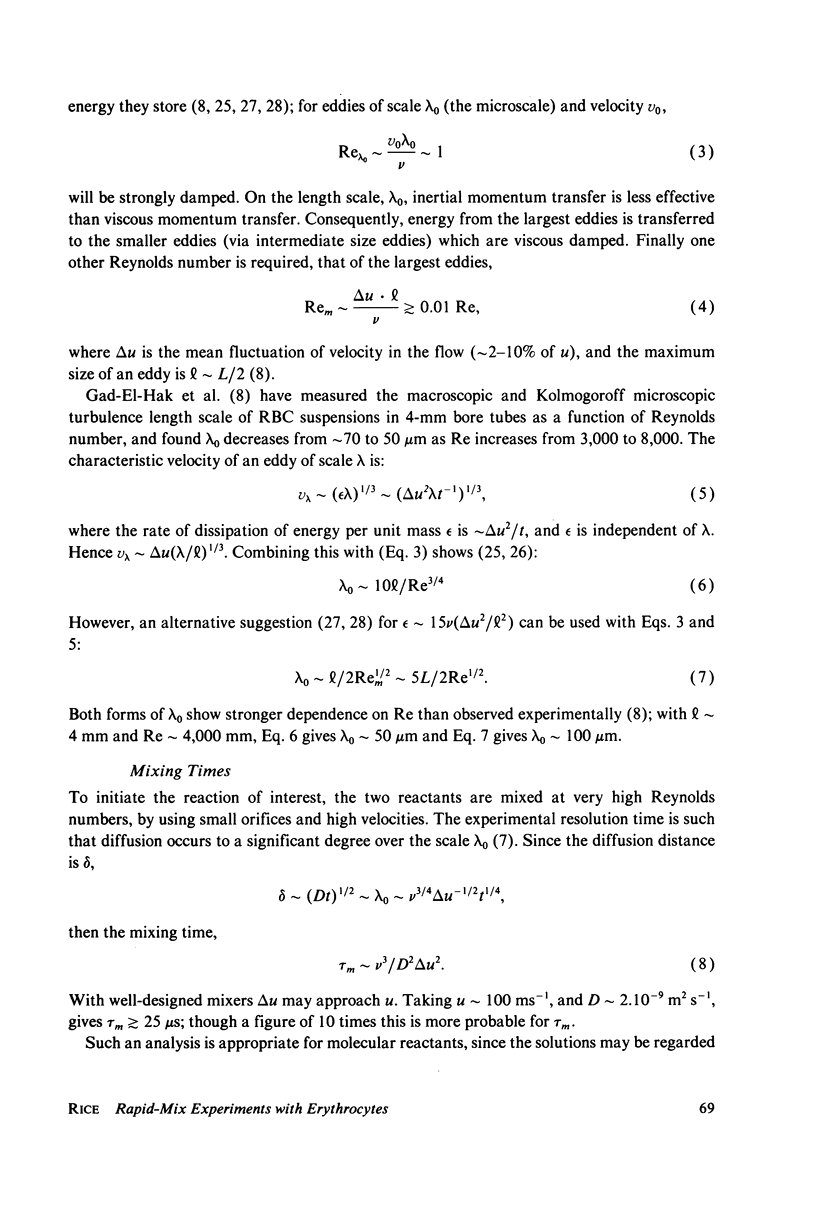
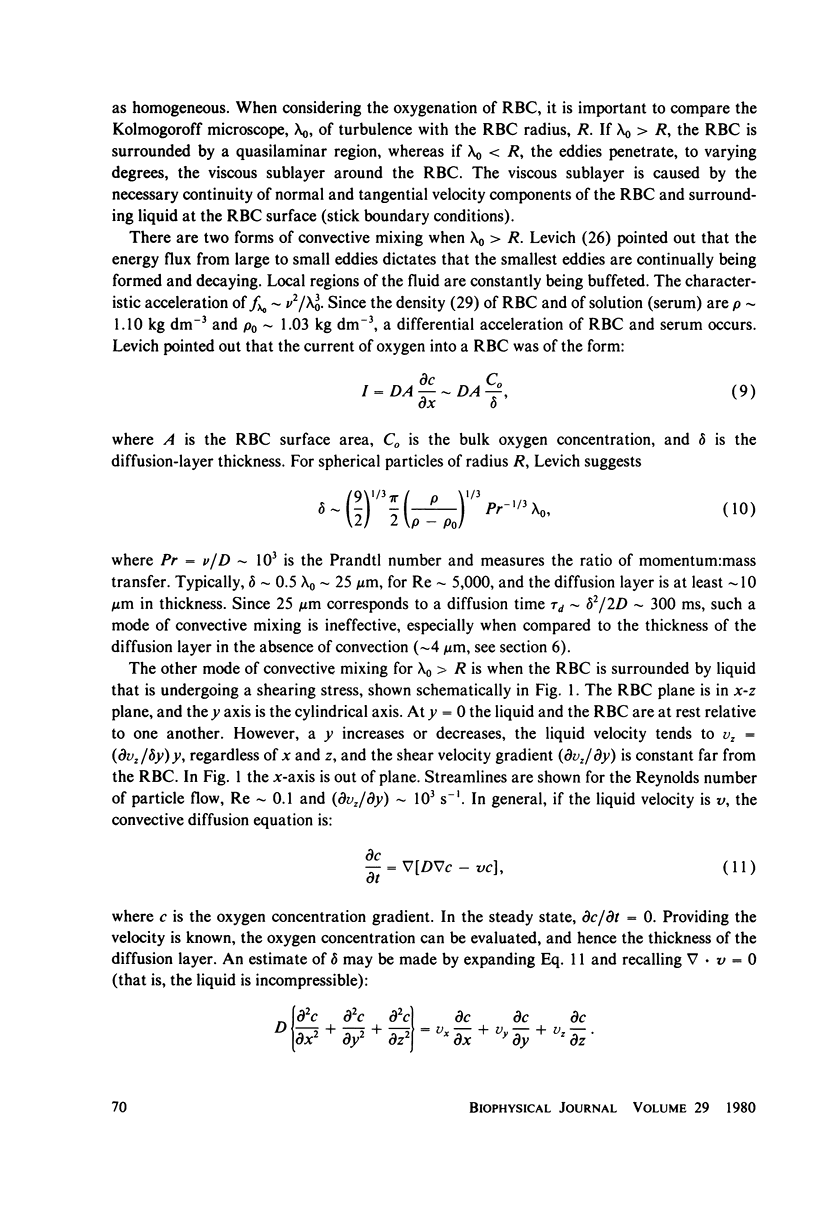
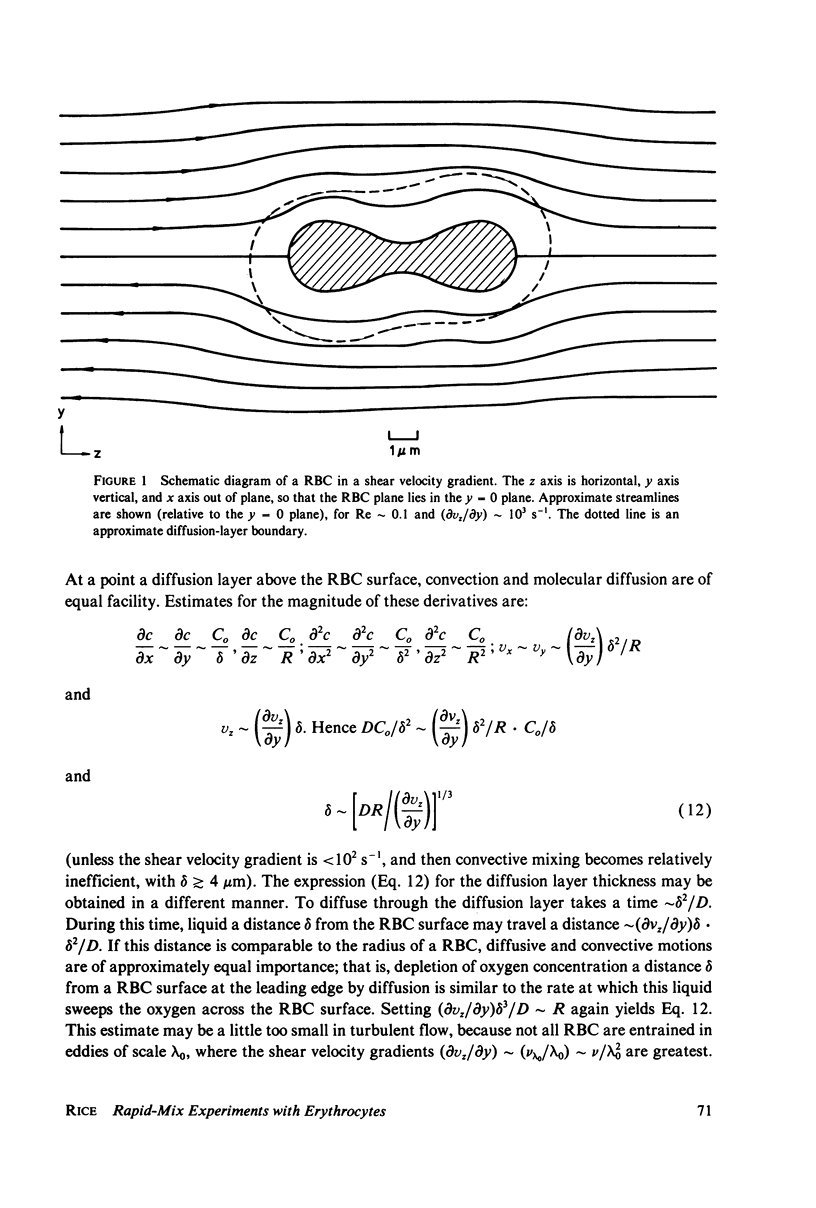
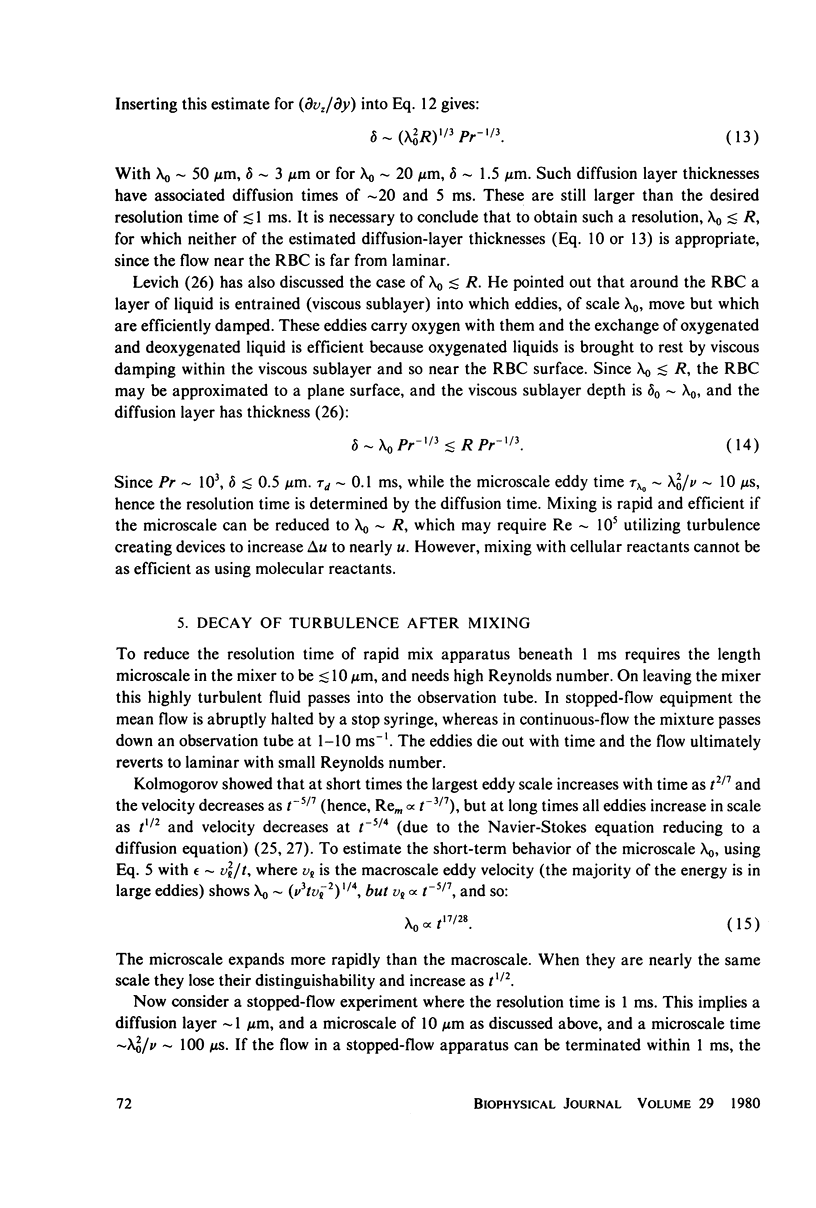
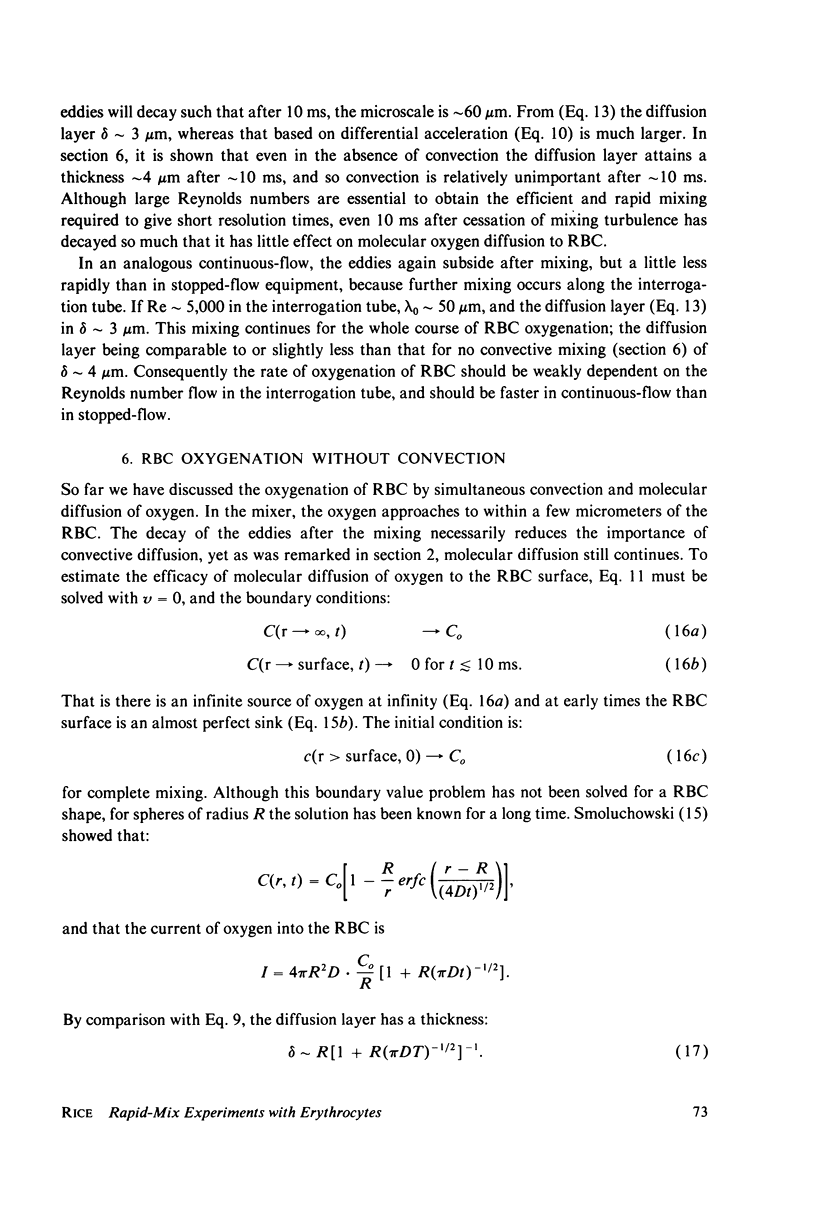
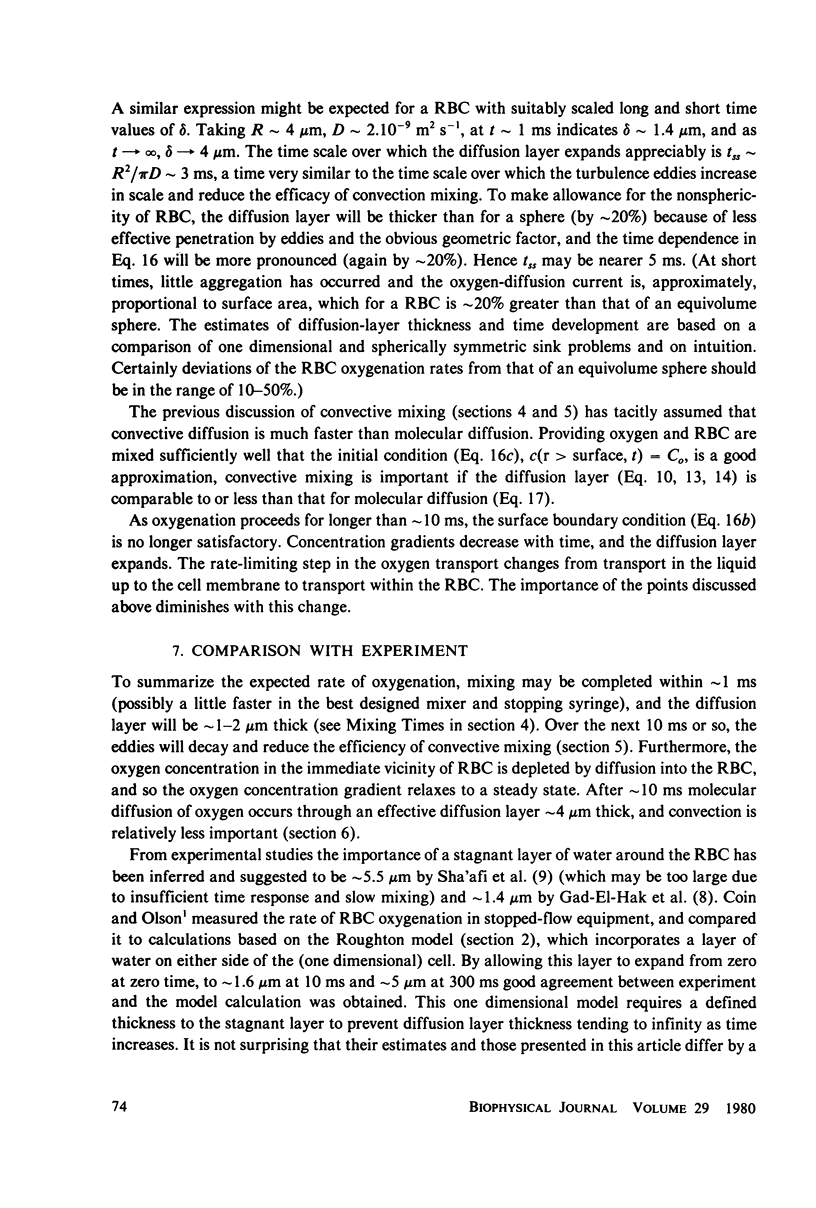


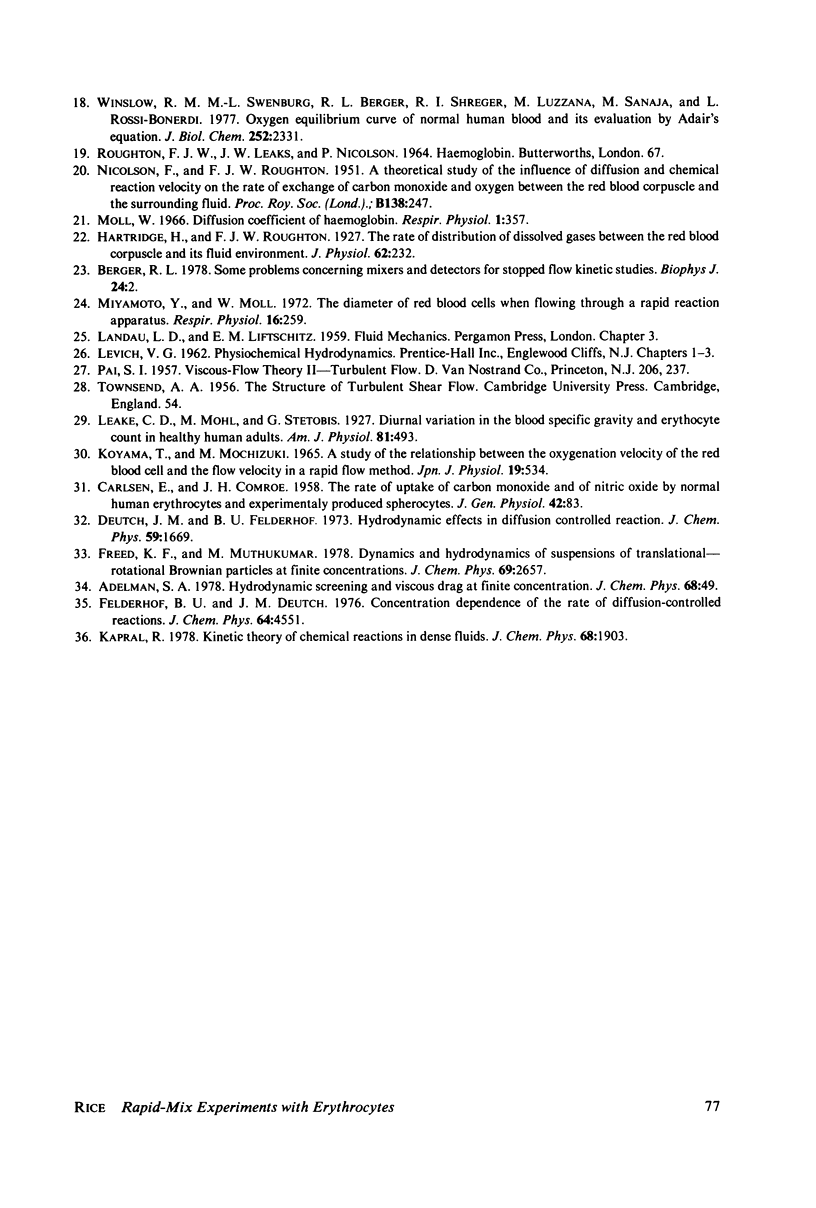
Selected References
These references are in PubMed. This may not be the complete list of references from this article.
- Berger R. L. Some problems concerning mixers and detectors for stopped flow kinetic studies. Biophys J. 1978 Oct;24(1):2–20. doi: 10.1016/S0006-3495(78)85327-2. [DOI] [PMC free article] [PubMed] [Google Scholar]
- CARLSEN E., COMROE J. H., Jr The rate of uptake of carbon monoxide and of nitric oxide by normal human erythrocytes and experimentally produced spherocytes. J Gen Physiol. 1958 Sep 20;42(1):83–107. doi: 10.1085/jgp.42.1.83. [DOI] [PMC free article] [PubMed] [Google Scholar]
- Gad-El-Hak M., Morton J. B., Kutchal H. Turbulent flow of red cells in dilute suspensions. Effect on kinetics of O2 uptake. Biophys J. 1977 Jun;18(3):289–300. doi: 10.1016/S0006-3495(77)85614-2. [DOI] [PMC free article] [PubMed] [Google Scholar]
- Hartridge H., Roughton F. J. The rate of distribution of dissolved gases between the red blood corpuscle and its fluid environment: Part I. Preliminary experiments on the rate of uptake of oxygen and carbon monoxide by sheep's corpuscles. J Physiol. 1927 Jan 12;62(3):232–242. doi: 10.1113/jphysiol.1927.sp002354. [DOI] [PMC free article] [PubMed] [Google Scholar]
- Koyama T., Mochizuki M. A study on the relationship between the oxygenation velocity of the red blood cell and the flow velocity in a rapid flow method. Jpn J Physiol. 1969 Aug;19(4):534–546. doi: 10.2170/jjphysiol.19.534. [DOI] [PubMed] [Google Scholar]
- Kutchai H. Numerical study of oxygen uptake by layers of hemoglobin solution. Respir Physiol. 1970 Oct;10(3):273–284. doi: 10.1016/0034-5687(70)90048-4. [DOI] [PubMed] [Google Scholar]
- Kutchai H. Role of the red cell membrane in oxygen uptake. Respir Physiol. 1975 Jan;23(1):121–132. doi: 10.1016/0034-5687(75)90076-6. [DOI] [PubMed] [Google Scholar]
- Miyamoto Y., Moll W. The diameter of red blood cells when flowing through a rapid reaction apparatus. Respir Physiol. 1972 Oct;16(2):259–266. doi: 10.1016/0034-5687(72)90055-2. [DOI] [PubMed] [Google Scholar]
- Moll W. The diffusion coefficient of haemoglobin. Respir Physiol. 1966;1(4):357–365. doi: 10.1016/0034-5687(66)90002-8. [DOI] [PubMed] [Google Scholar]
- ROUGHTON F. J. W. Diffusion and chemical reaction velocity in cylindrical and spherical systems of physiological interest. Proc R Soc Lond B Biol Sci. 1952 Oct 16;140(899):203–229. doi: 10.1098/rspb.1952.0059. [DOI] [PubMed] [Google Scholar]
- Sha'afi R. I., Rich G. T., Sidel V. W., Bossert W., Solomon A. K. The effect of the unstirred layer on human red cell water permeability. J Gen Physiol. 1967 May;50(5):1377–1399. doi: 10.1085/jgp.50.5.1377. [DOI] [PMC free article] [PubMed] [Google Scholar]
- Winslow R. M., Swenberg M. L., Berger R. L., Shrager R. I., Luzzana M., Samaja M., Rossi-Bernardi L. Oxygen equilibrium curve of normal human blood and its evaluation by Adair's equation. J Biol Chem. 1977 Apr 10;252(7):2331–2337. [PubMed] [Google Scholar]


